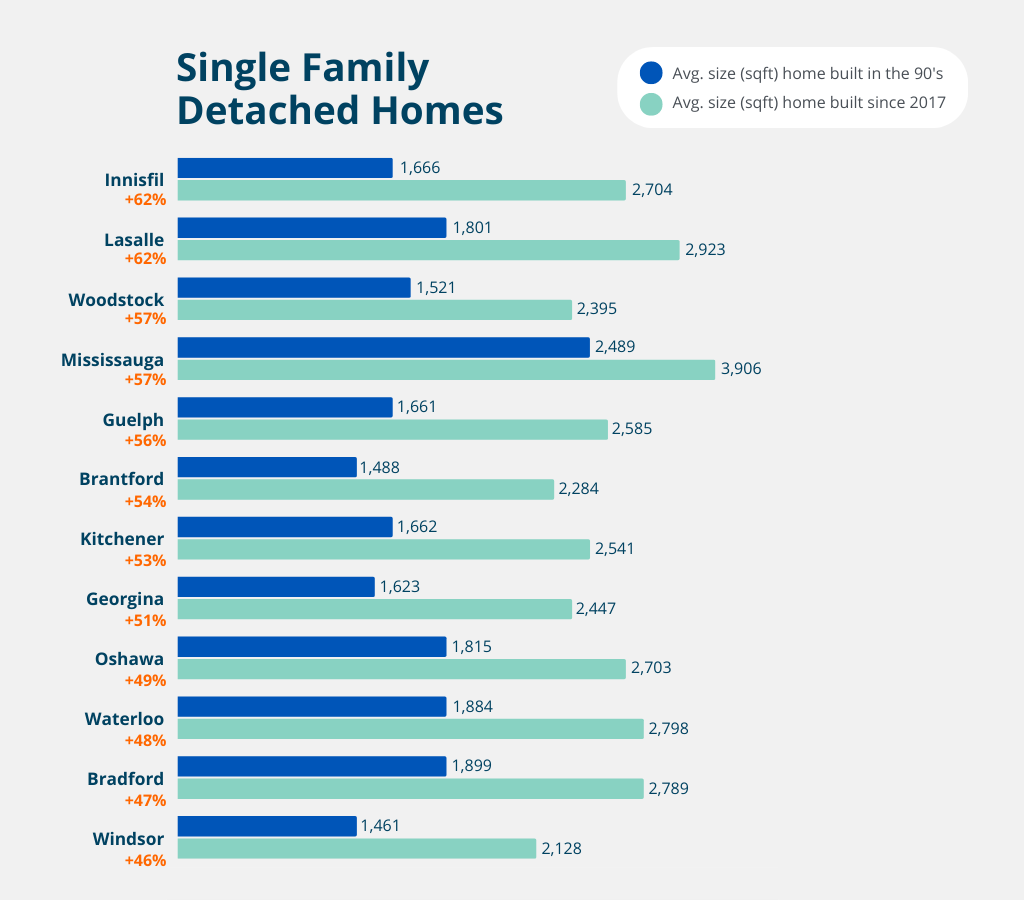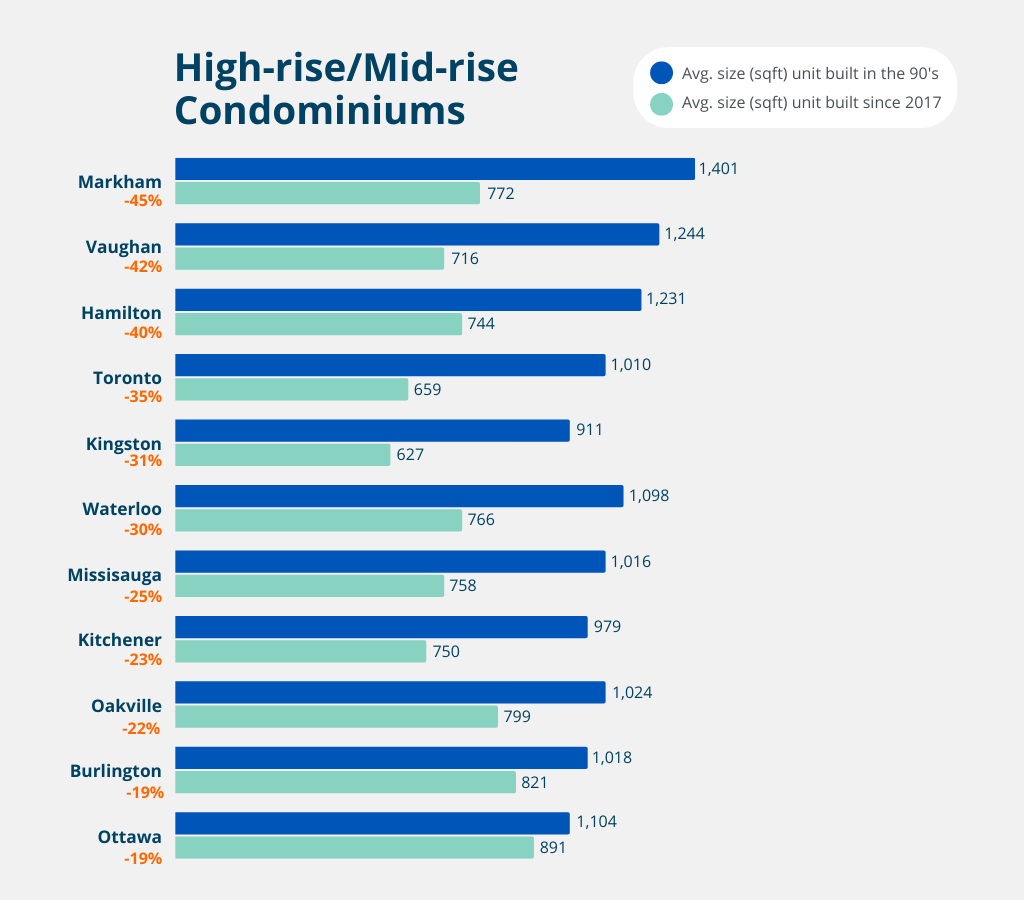Condos getting smaller, detached homes getting bigger
Ontario condominiums are 35% smaller on average than they were 25 years ago, while the average detached home is 25% larger.
The Municipal Property Assessment Corporation (MPAC), which tracks property data across the province, is watching to see if this decades-long pattern continues.
In the mid-1990s, the average condominium in Ontario peaked at approximately 1,100 sq. ft. The most recent MPAC data shows the average condo today is about 700 sq. ft.
“As land values increase, we see more units on a single property, which means many of those individual units are smaller,” says Greg Martino, MPAC Vice-President and Chief Valuation and Standards Officer. “Because condos are traditionally a major entry point for first-time home buyers and investors, the market for the smaller units has remained quite strong.”
A similar trend toward smaller units is also evident in the townhouse market, with stacked townhouses – multiple units constructed vertically on a single lot – being built instead of traditional row townhouses.
In markets where land is relatively affordable, larger family detached homes are being developed. For example, single family detached homes were approximately 2,000 sq. ft. in the mid-90s and today a typical single-family home is around 2,500 sq. ft.
“These are long-standing trends that will likely continue,” Martino says. “It will be interesting to see whether the change in consumer preferences and behaviours over the last couple of years, coupled with recent economic drivers, like inflation and rising interest rates, will alter the pattern,” he continued.
Currently, amongst Ontario’s major urban centres, the average condo size in Toronto is 850 sq. ft. – the smallest in Ontario. Windsor is next with an average of 854 sq. ft., followed by Kitchener (884 sq. ft.) Richmond Hill (892 sq. ft.) and Hamilton (907 sq. ft.).
For those seeking more living space, Barrie, Burlington and Oakville are all municipalities with some of the largest average condominium sizes, at more than 1,000 sq. ft.
Quick Facts
Single Family Detached Homes
| Municipality | Avg size home built in the 90s | Avg size home built since 2017 | % Change |
|---|---|---|---|
| Innisfil | 1,666 | 2,704 | 62% |
| Lasalle | 1,801 | 2,923 | 62% |
| Woodstock | 1,521 | 2,395 | 57% |
| Mississauga | 2,489 | 3,906 | 57% |
| Guelph | 1,661 | 2,585 | 56% |
| Brantford | 1,488 | 2,284 | 54% |
| Kitchener | 1,662 | 2,541 | 53% |
| Georgina | 1,623 | 2,447 | 51% |
| Oshawa | 1,815 | 2,703 | 49% |
| Waterloo | 1,884 | 2,798 | 48% |
| Bradford | 1,899 | 2,789 | 47% |
| Windsor | 1,461 | 2,128 | 46% |
Visual of the single family detached home size information

High-rise/Mid-rise Condominiums
| Municipality | Avg size unit built in the 90s | Avg size unit built since 2017 | % Change |
|---|---|---|---|
| Markham | 1,401 | 772 | -45% |
| Vaughan | 1,244 | 716 | -42% |
| Hamilton | 1,231 | 744 | -40% |
| Toronto | 1,010 | 659 | -35% |
| Kingston | 911 | 627 | -31% |
| Waterloo | 1,098 | 766 | -30% |
| Mississauga | 1,016 | 758 | -25% |
| Kitchener | 979 | 750 | -23% |
| Oakville | 1,024 | 799 | -22% |
| Burlington | 1,018 | 821 | -19% |
| Ottawa | 1,104 | 891 | -19% |
Visual of the high-rise/mid-rise condominium size information

About MPAC
MPAC is an independent, not-for-profit corporation funded by all Ontario municipalities, accountable to the Province, municipalities and property taxpayers through its 13-member Board of Directors.
Our role is to accurately assess and classify all properties in Ontario in compliance with the Assessment Act and regulations set by the Government of Ontario. We are the largest assessment jurisdiction in North America, assessing and classifying more than five million properties with an estimated total value of $2.96 trillion.
For additional information, visit www.mpac.ca.
Media Contact
media@mpac.ca
289-539-0830





